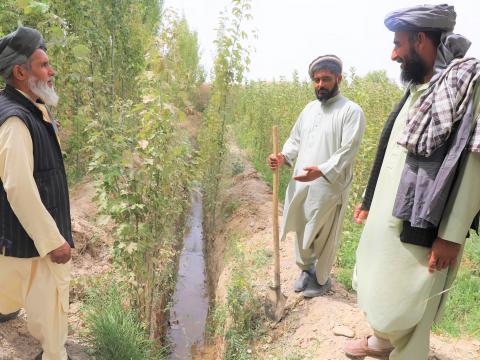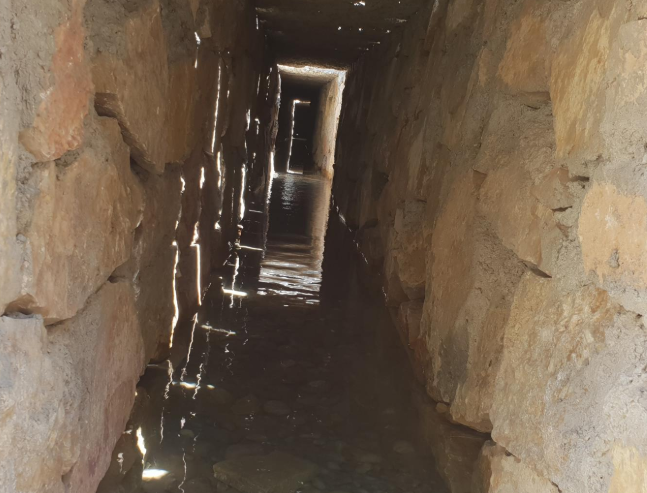A Fairer Fight – One Afghan Village Tackles the Impacts of Climate Change

In Afghanistan, the effects of climate change are visible everywhere. In the past few years the country has seen a reduction of groundwater, experienced severe drought, and suffered the effects of extreme heat. Several seasons of catastrophic droughts and flooding have hit Badghis province forcing many farmers to leave their homes and families and seek greener pastures in Iran.
Mohammad Amin, 42, is a farmer in the village of Naizabeha was forced to leave the village to support his eight children. “Three years ago, our lands were dry and barren. There were few trees and [not enough] agricultural land to support ourselves,” says Amin.
People also struggled with the negative environmental effects of drought. Without trees and other forms of vegetation, dust storms were on the increase. Children are not spared from the calamities of the harsh weather conditions. According to Amin, the dry climate “brought [sickness] and physical ailments. Children in particular were suffering from heat stroke, and there was very little shade to sit in”
In response to the drought, World Vision Afghanistan (WVA) initiated an Area Integrated Programme with funding from World Vision Hong Kong and Korea. Teams of villagers were paid to help construct a kariz in Naizabeha which provides irrigation to approximately 100 acres of agricultural lands. The kariz, a series of canals connected through underground tunnels and wells, also runs through three other villages, providing water to irrigate crops and for the domestic use for 445 households.
The canal was the reason why Mohammad Amin came back home. “When I returned, I found the land had become green and the area was much cooler than it was before” Amin understands the critical impact climate change has on all aspects of life and also understands why it is important to plant more trees “Planting and [greening] the land reduces airborne dust and freshens the air. It also protects children from respiratory diseases and heat exhaustion,” he explains.
Thirty-three-year-old Sahar Gul grows tomatoes in her yard, one of the ways she helps support her family. The garden acts as both a source of food but also earns her some income, which she uses for her household needs. When she needs water for her crop she draws it from the new canal constructed by the AIP project. “I am very happy that our family that at least we have this garden to rely on ” she says. “Previously, due to water shortages, the land was dry.” She also uses the water for her domestic needs, which include bathing her children, as well as cooking and laundry.
Abdul Aziz, the community head, is confident that farmers will produce more food this year. “Construction of the [kariz] has transformed dry farms into fertile land. Farming is the only income-generating activity for many [of the village’s] families, and the water in this stream” represents a potential profit for farmers who sell their products in local markets.
As for Mohammad Amin, he has already planted 150 poplar saplings and aims to plant more. Water has literally given life back to the land, which in turn offers better livelihood opportunities to the inhabitants of Naizebeha Village. Climate Change is one of the major drivers for food insecurity and the loss of livelihoods for many families. There is need to help children, their families and communities to be aware of its impacts, how they should adapt to and mitigate some of the impacts. World Vision Afghanistan now seeks to help communities build their resilience to climate related shocks as well as strengthening their ability to mobilize resources and manage local hazards and risks.
